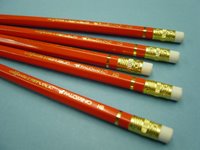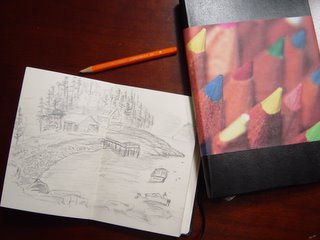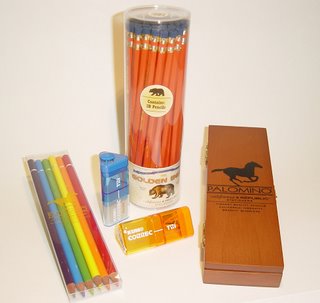 I wanted to take this opportunity to thank the growing numbers of Palomino Riders and fans of our other pencil items that have supported our product and efforts at our Pencil world Creativity Store @ eBay. We are proud that we continue to maintain a 100% Positive feedback rating and have a growing number of first-time and repeat customers who clearly appreciate good quality pencils. Jeanette has done a super job handling the store and I know she appreciates all the kind words of support from you. She continues to work as time allows to expand our offerings or to add special auction items and special promotions like our current Easter Pencil Promotion and we enjoy hearing back from you about your ideas.
I wanted to take this opportunity to thank the growing numbers of Palomino Riders and fans of our other pencil items that have supported our product and efforts at our Pencil world Creativity Store @ eBay. We are proud that we continue to maintain a 100% Positive feedback rating and have a growing number of first-time and repeat customers who clearly appreciate good quality pencils. Jeanette has done a super job handling the store and I know she appreciates all the kind words of support from you. She continues to work as time allows to expand our offerings or to add special auction items and special promotions like our current Easter Pencil Promotion and we enjoy hearing back from you about your ideas.
Now here’s an update on 6 new listings we’ve added over the weekend. First, we have four new Inventory listings (shown in phot here) to expand our selection of KUM sharpeners, Golden Bear and Palomino pencil items.
The KUM Correc-Tri Sharpener with Eraser is a stylish new item from KUM which includes an integrated magnesium wedge sharpener for standard pencils with container storage for shavings and a high quality eraser integrated into the base. It’s a nice integrated tool for a desktop accessory. We’ve made our final selection of KUM sharpener items and will be adding them as received into our stock.
Our Golden Bear 2B grade graphite pencils are now available in our 40 count tube packaging format. This expands to two lead grades (HB & 2B) in our Golden Bear range for those who prefer a slightly darker mark than a standard HB pencil. The 2B will only be available in our orange lacquer-blue eraser combination. Though not quite the high standard of our Palomino graphite leads the Golden Bear makes a fine writing pencil ideal for home, office and school use The Golden Bear pencil uses a make a nice complement to the orange and blue
Two new package options are available in our Palomino Range. First, is our new Palomino Rainbow Set. This 6 pencil pack selects the vibrant colors of the Rainbow from our artist quality wax color line. Included colors are: Purple, Blue, Yellow-Green, Yellow, Orange & Red. This item provides the quickest, easiest way to sample our artist color pencils in 6 popular colors. If you like these we encourage you to expand your selection through purchase of Wax Color Variety or Aquarelle Variety in 6 packs where you can select your own mix of colors from either our list of Artist Wax Color or Aquarelle ranges. Or go for the whole range with one of our complete wood boxed sets.
The Palomino Graphite HB Wood box set offers a new option to provide a nice wood case to stable those Palominos on your desktop or workspace. This item comes pre-packed with 3 each blue and orange Palomino HBs. However, the box will hold up to 12 Palominos, whether graphite, artist wax color or aquarelle. It takes a bit less space than our color pencil 12 count sets.
Next, we also continue our Vintage & Collectables Series with two new auction listings this week.
The feature item is a pairing of Henry Petroski’s book “The Pencil: A History of Design & Circumstance” with a 40 count tube of our Golden Bear HB pencils. This particular book is a 1st edition hardcover printing and comes from the personal collection of my grandfather Charles, was a gift from a former employee of the company and includes an inscription to Charles. Petroski’s book is the pre-eminent history of the pencil, of a number of the leading companies that make up the industry and of the advances in technology and materials that lead to developing the modern wood cased pencil. A must reed for any new Pencil Revolutionary.
The final Vintage & Collectable series item is a second Auction of our Palomino Natural finish Incense-cedar cased Ball Point Pen. This pen is one of just a few dozen that were produced for premium gift purposes and only a few remain on hand. We have paired this item with one our popular Palomino 6 count mixed grade Graphite packs.
We hope you enjoy these new listings and will check back at PWCS @ eBay upon occasion for new items we continue to add to our growing selection. We do plan an expanded range of stock Inventory listings as well as running more Grab Bag or Vintage & Collectable auctions as time permits. We’d really love to do one or two of these a week, but time is limited to prepare and manage such one of a kind one time auctions. We do auction certain non-stock items on an occasional basis such as our ForestChoice Carpenter pencil 144 count pack or 18 Count Palomino artist color sets where a special buy can generally be made at below our Buy it Now! prices.
Though I will do a Timberlines post now and then about new listings the best way to keep notified on what’s new is to sign up for our e-mail mailing list by adding Pencil World as one of your favorites while visiting our store site. If you have thoughts and ideas on new items or auctions you’d like to see added just let us know by commenting here. Again thanks for you business and we hope to see.
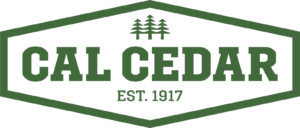








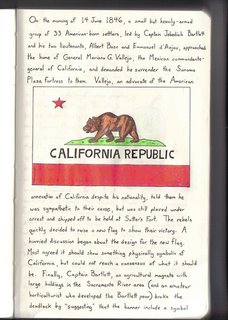 revolutionaries remains an inspiration for us here at
revolutionaries remains an inspiration for us here at 